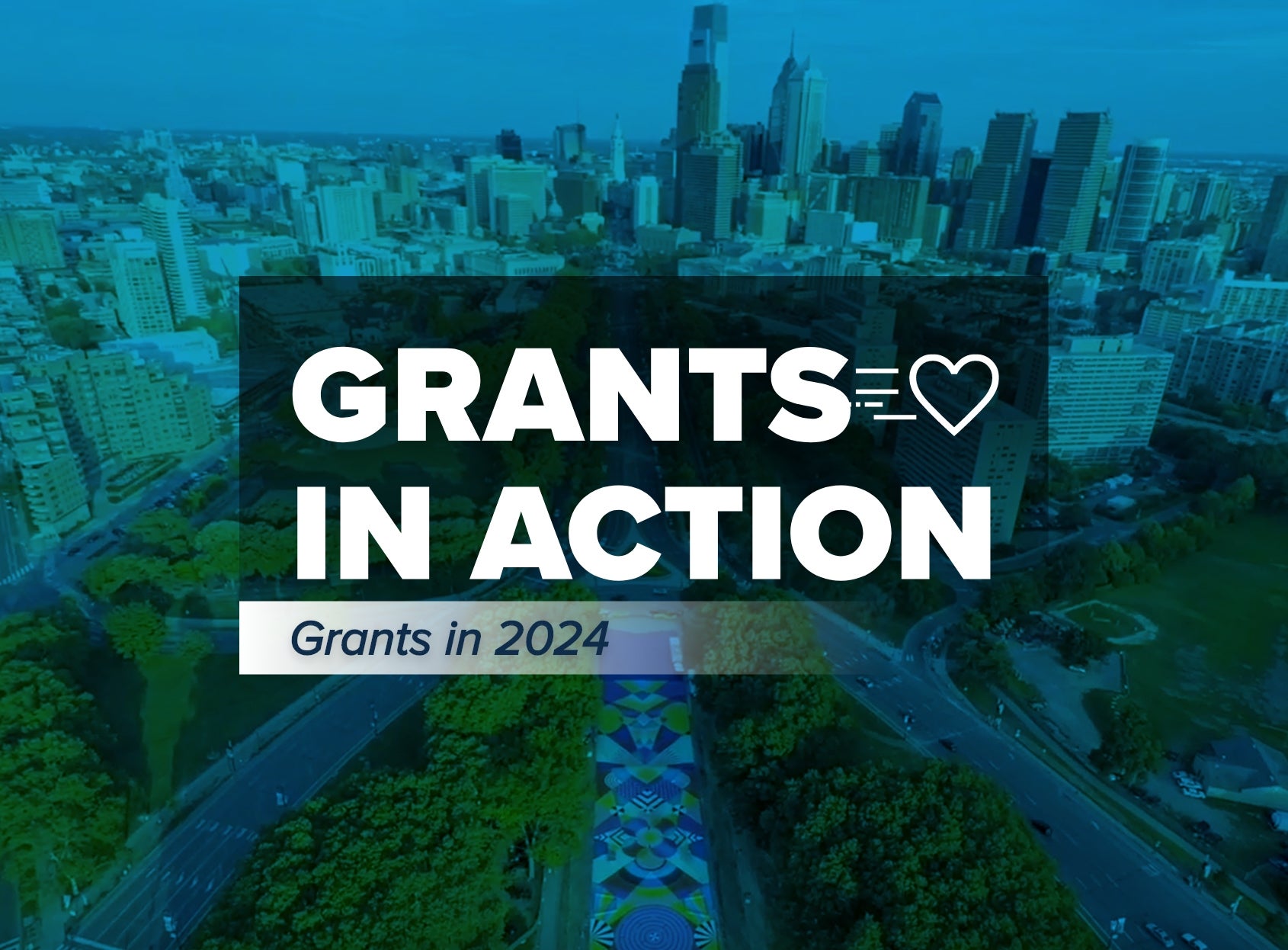A Glossary of Charitable Giving Vehicles

For every philanthropist, there is a giving vehicle that will best suit their specific charitable goals—often even more than one. With so many ways to support charitable causes, it can be difficult to identify which giving vehicle(s) may best align with your philanthropy strategy. To help donors familiarize themselves with the basics of available options, we have compiled a list of popular giving vehicles. First, we’ll start by discussing private foundations and donor-advised funds (DAFs).
What is a Private Foundation?
Any entity that makes grants for charitable purposes can be considered a foundation. There are two types of foundations: private foundations and grantmaking public charities. The difference between the two is the source of the funding. Private foundations are typically funded by a single individual or family, whereas a public charity receives support from a wide variety of public sources and private individuals.
There are more than 135,000 private foundations in the United States. For high-net-worth individuals, creating a private foundation may be among the first considerations due to its long-time popularity. A private foundation offers the founders direct control over grantmaking and investing decisions, but there are a number of considerations and responsibilities inherent in starting and running a private foundation.
Forming a private foundation requires approval by the IRS, and all private foundations must have a Board to provide governance and oversight of the foundation’s activities. Foundations must report to the IRS all grants made in each fiscal year, and they are required to distribute at least 5% of their net assets for charitable purposes annually. They must also file annual tax returns, manage and administer all organizational functions, and may be required to facilitate an annual audit conducted by an independent accounting firm
A private foundation can take anywhere from a few weeks to a few months to establish, and the associated start-up fees (including legal) may be substantial. It is also important to consider that the administrative labor involved with running a foundation can be as intensive as that of a for-profit business, potentially rendering this charitable vehicle too time-consuming for some donors.
What is a Donor-Advised Fund (DAF)?
A donor-advised fund, or DAF, is a giving account established at a public charity, allowing donors to make charitable contributions, receive an immediate tax deduction, and recommend grants from their DAF account over time. Donors can contribute to their fund as often as they would like and can recommend grants when it makes sense for them. All contributions to a DAF are irrevocable and must be used for charitable purposes. The sponsoring public charity retains exclusive legal control over all contributed assets, but donors and/or other individuals they designate may retain advisory privileges to make non-binding recommendations with respect to the investment of the assets in the DAF and distributions, or grants, to other charitable organizations. As of 2021, there are more than 1.2 million DAF accounts in the United States.
Setting up a DAF is usually a simple process; the fund can be established immediately, and there are usually no start-up costs or set-up fees. Administrative and management fees are typically less than those of a private foundation, but while donors may recommend grants and investments, the sponsoring charity makes all final decisions. Sponsors will have specific rules and guidelines, but in general a donor may recommend a grant to any operating 501(c)(3) public charity in good standing with the IRS and that is not under any regulatory investigation. There is no annual payout rate for DAFs as with private foundations, but individual sponsoring charities may uphold internal standards for active grantmaking for DAF accounts under their management.
What Other Charitable Giving Vehicle Options Exist?
While private foundations and DAFs are two of the more popular types of charitable giving vehicles, they are only a part of a larger range of options available to donors. Indeed, philanthropists who invest their time in creating a charitable giving strategy can use a DAF, a private foundation and many other ways to give at the same time. Here is a quick glossary of additional ways to support charitable causes:
Charitable Gift Annuity: This vehicle is a contract between a donor and a charitable organization that enables a donor to support a charitable organization and retain an income stream in the form of regular annuity payments. Donors make a gift to the charitable organization, that gift is invested by the charitable organization, and the donors receive regular payments from the charitable organization in accordance with the schedule agreed upon in their annuity contract. At the end of the annuitant’s life, the charitable organization receives the remainder of the invested funds. It is important to note that a charitable gift annuity is a general obligation of the issuing charitable organization, and the organization’s financial health may impact its ability to make the required payments in the future. This vehicle is not a trust.
Charitable Remainder Trust: This vehicle is like a charitable gift annuity in that it can potentially generate an income stream for the donor and/or their beneficiaries during their lifetimes. This is an irrevocable trust that pays the donor a fixed amount (via an annuity trust) or a percentage of the value of the trust’s assets (via a unitrust) each year for a fixed term or for life. Any assets remaining at the end of the annuity trust or unitrust term passes to one or more of the designated charitable beneficiaries.
Charitable Lead Trust: Like a charitable remainder trust (CRT), this vehicle is an irrevocable trust, but the designated charity receives payments up front rather than at the end of the income stream. This is an irrevocable trust established to make a stream of payments to one or more designed charities for a fixed term or for the life of the donor or another individual, and whatever is left in the trust and the end of the charitable lead period passes to or in trust for designed beneficiaries.
Designated Funds: Similar to a DAF (but technically not a DAF), this type of fund is established to support a single designated charitable organization; this type of fund can be used to either make a single charitable gift or recurring gifts to one charitable organization. Once established, the designated charitable organization cannot be changed.
Direct Giving: The simplest way of engaging with philanthropy, direct giving is the act of supporting an organization or cause by giving cash, check, or credit card. This vehicle requires little foreplanning and can provide a donor with greater flexibility, if necessary.
Field of Interest Fund: This type of fund allows a donor to support a charitable area of interest, like a specific population, geographic region, or area of research.
Fiscal Sponsorship: A contractual relationship between a public charity sponsor and a sponsored charitable project. This vehicle is commonly used to facilitate the development and growth of charitable, mission-driven activities advancing public benefit. Fiscal sponsorships enable a charitable project that has not applied for tax-exempt status to carry on charitable activities and receive funding under the umbrella of the tax-exempt sponsor organization. The public charity sponsor provides administrative support, financial oversight, tax reporting and governance.
For Profit LLC: Providing a donor with the flexibility to engage in non-charitable activities (such as lobbying) and make grants to or invest in nearly any organization and/or company they feel aligns with their cause.
Funder Collaborative: Funder collaboratives emphasize the value of bringing varied experiences, knowledge, relationships and resources together to advance a shared philanthropic goal; common types of funder collaboratives include but are not limited to learning networks, strategic alignment networks and pooled funds.
Giving Circle: Harnessing the power of a collective, a giving circle is a group of donors brought together through their common philanthropic interests and goals who pool their collective resources to make charitable gifts to the causes and nonprofits they care about. Current data indicates there are currently around 2,500 active giving circles around the world.
Supporting Organizations: Similar in many ways to a private foundation, a supporting organization has its own board, tax ID number, and files a separate Form 990 tax return. Unlike a private foundation, a supporting organization is treated like a public charity because it supports and facilitates the charitable purpose of a separate public charity with which is has a close relationship.
As your partner in giving, we are proud to share these resources to spark curiosity and conversations between you and your family and/or with your financial advisor. Remember, there is no “one right way” to give. The list above, combined with other methods including mentorship, volunteering, and advocacy are among an expanding galaxy of options available for donors who want to maximize their charitable impact.
NPT does not provide legal or tax advice. This blog post is for informational purposes only and is not intended to be, and shall not be relied upon as, legal or tax advice. The applicability of information contained here may vary depending on individual circumstances.


